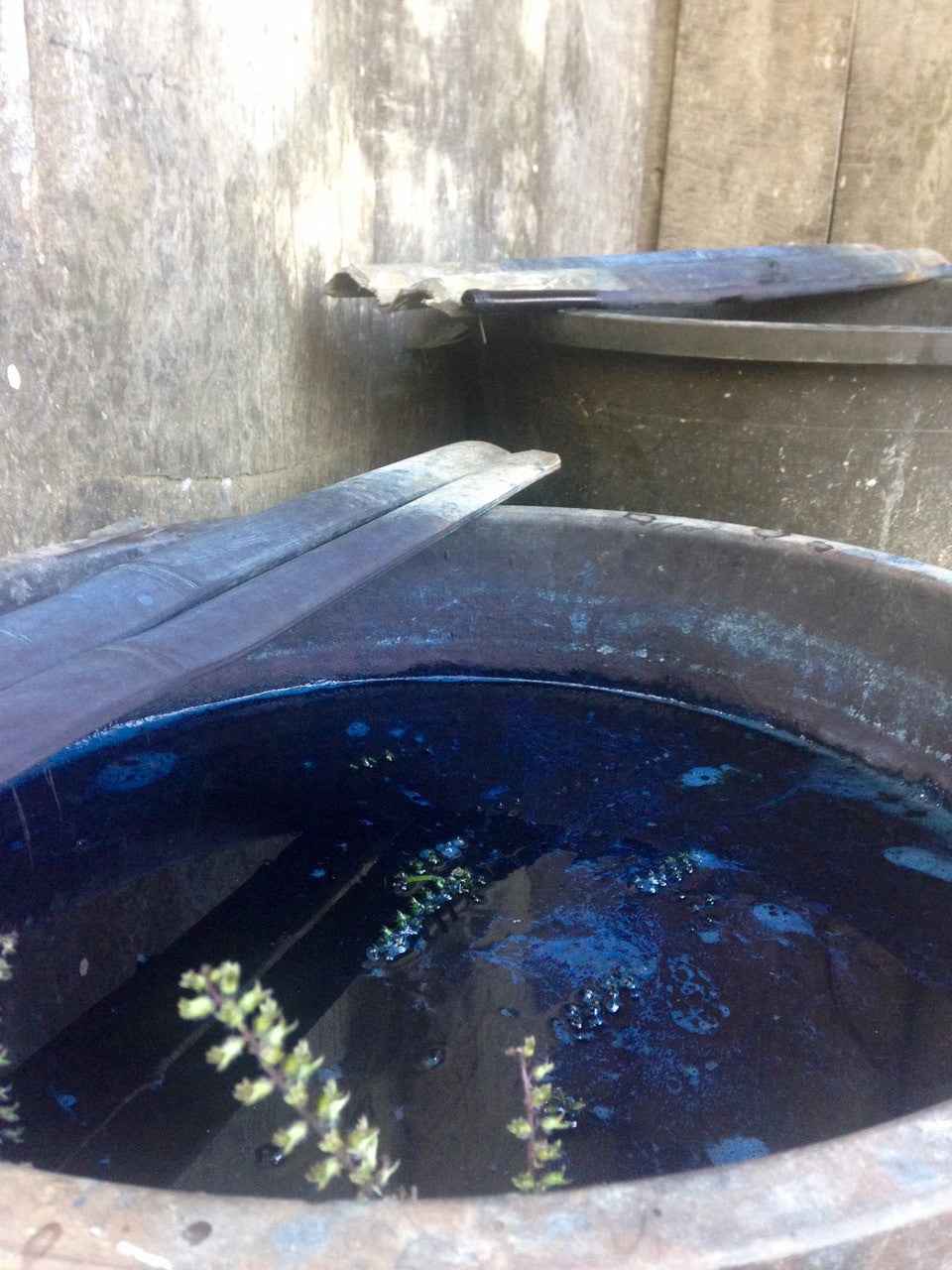
About the cotton and the indigo
All of the cotton and indigo used to make our jackets is homegrown, without pesticides. The plants are grown from seeds, harvested and then used to make the cloth and the colour. It is an ancient process done in the same ancient way.
Tamay goes on her motorbike to buy the cloth directly from the producers. It is a 3 hour journey from Taphin village where the jackets and the embroidery are made.
The whole year, in Tan Uyen village, is based around the cotton, indigo and rice.
In spring time the cotton seeds and rice grains are sown. The cotton is fast growing and is handpicked in July. It is then stored until the following March for the dry season when is it is beaten and prepared for spinning in September. The process is slow as the region is so wet and cotton has to be worked when the air is dry enough to work. During October the rice is harvested and stored. Once this is done, the weaving and dyeing of the cloth can begin, this takes place from the beginning of November through to mid- February, during the quieter winter months, before sowing and planting starts again in spring.

Indigo is a plant with big thick green leaves. It grows low to the ground all over the villages in the North of Vietnam. It is cultivated, but is native to this mountainous area.
The leaves are made into a fermented paste which is used to create a dye pot. When mixed with water and caustic lime it becomes a sort of potion with a shiny metallic bubbly surface and is ready to use. The cotton is carefully dipped in the pot to not to add in oxygen. When lifted out the colour is a pale green that only when it is in contact with the air for a few minutes it turns a deep blue colour. The cotton we buy is dipped in the dye pot 3 times a day over a period of one week, finishing in a total of 21 dips. This is what gives the cloth the rich, dark, almost black colour and ensures that the indigo is really deeply penetrated into the cotton cloth and not just resting on the surface. Once the cloth has saturated all the colour any excess particles are what cause blue rub onto hands or other textiles. Once these particles have come off the cloth wont loose any further indigo through colour rub.
The alchemic dying process of Indigo is considered magical or mystical. It is a very special process that gives a completely different quality of colour to even the most sophisticated of chemical dyes.

